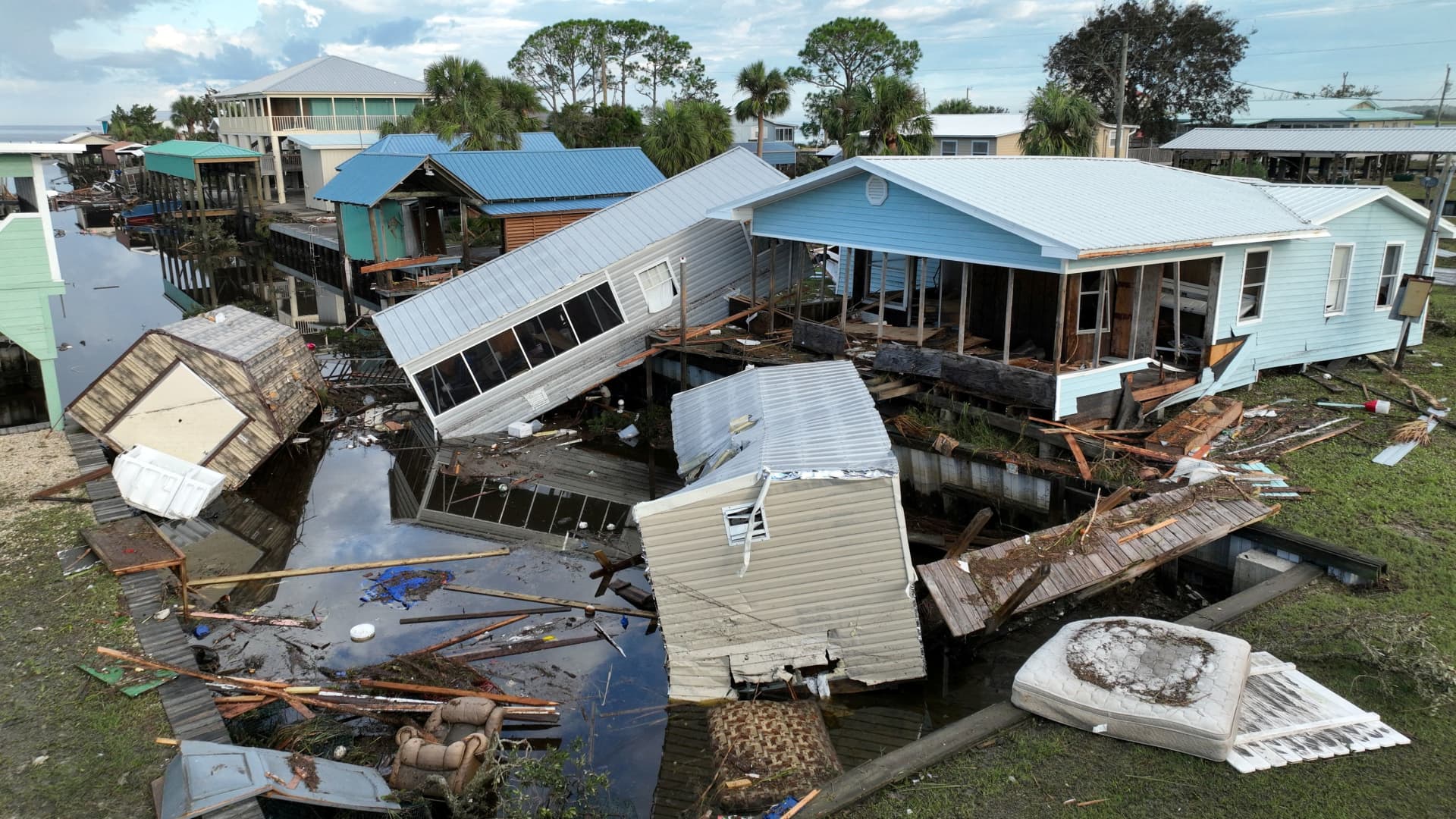The soaring costs of extreme weather are providing an opportunity for investors to grab yields north of 13%. Hurricane Lee is just the latest in what is expected to be an above-normal hurricane season this year. Already this year, the U.S. has experienced 23 confirmed weather and climate disaster events with losses exceeding $1 billion each, as of Sept. 11, according to the National Oceanic and Atmospheric Administration . To help potentially pay for damages borne of these extreme weather events, companies in the insurance industry sell catastrophe bonds. They came into the market in 1997 and have been gaining in popularity, with a few hiccups, ever since. They are also offering juicy returns. The spread, or yield, is about 8.33%, compared to the average 6.24% last year, said Cory Anger, managing director at GC Securities, the capital markets and insurance-linked securities arm of reinsurance broker Guy Carpenter. On top of that, investors earn an additional yield when the money is reinvested into high-quality collateral such as U.S. Treasury money market funds or AAA-rated securities from development banks such as the World Bank, she explained. “Investors’ total return on these securities, on average, is a little over 5% from the collateral — plus the 8.33% spread, on average, on the bonds,” she said, referring to those with a risk profile consistent with BB rating levels. “You’re getting healthy yields to take on this risk.” Investors are mainly hedge funds, pension funds, asset managers and high-net-worth individuals. However, A shares of the Pioneer Cat Bond Fund (ACBAX) are available to retail investors. A record year for issuance is expected Some $9.7 billion of cat bonds were issued in the first half of 2023, about $1.9 billion higher than the same period last year, according to Artemis Deal Directory , which tracks cat bonds and other insurance-linked securities. That is also $3.2 billion above the 10-year average. As of Friday, more than $10 billion has been issued year to date, per Artemis. “Based on what we’re seeing for the rest of the year, this could very well be our highest ever issuance,” Anger said. There is just over $38 billion in outstanding cat bonds on the market right now, and she thinks it could push over $40 billion by the end of the year. How cat bonds work Cat bonds pay the issuer when a predefined disaster risk is realized, known as an attachment point. For instance, it can be after $825 million in losses occur from a hurricane. Once that is triggered, investors could lose some, or even all, of their principal, Anger said. “It’s all designed like layers within the losses that the company may suffer,” she explained. Losses that are incurred come from the ground up and cat bonds are usually “quite high up” in that tower — and they have been moving higher, said Steve Evans, owner and editor in chief of Artemis. “The investment opportunity is actually really strong right now because it’s a more remote level of risk for a far better return,” he said. “The risk adjusted return is significantly better right now than it was five or six years ago.” On average, the bonds are about three years in duration. They can be based on a single event or multiple events over a period of time. Investing in cat bonds While catastrophe bonds mainly target institutional investors, Amundi’s Pioneer Cat Bond Fund has A shares available for retail investors. The mutual fund, which invests at least 80% of its net assets in catastrophe bonds, was launched in January and has an initial minimum investment of $1,000. It has $75.2 million in assets and an expense ratio of 1.75%, according to Morningstar . The fund has returned 9% since its Jan. 27 inception. “Its initial performance has been encouraging. Still, with such a short track record, it is too early to draw a conclusion based on performance,” Morningstar’s research team wrote in August.
This website uses cookies so that we can provide you with the best user experience possible. Cookie information is stored in your browser and performs functions such as recognising you when you return to our website and helping our team to understand which sections of the website you find most interesting and useful.




















Discussion about this post